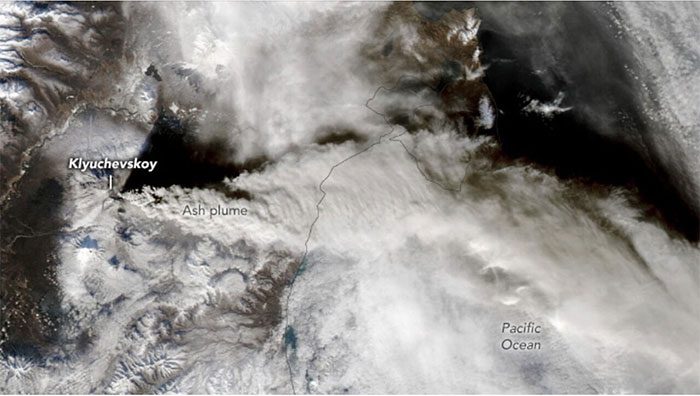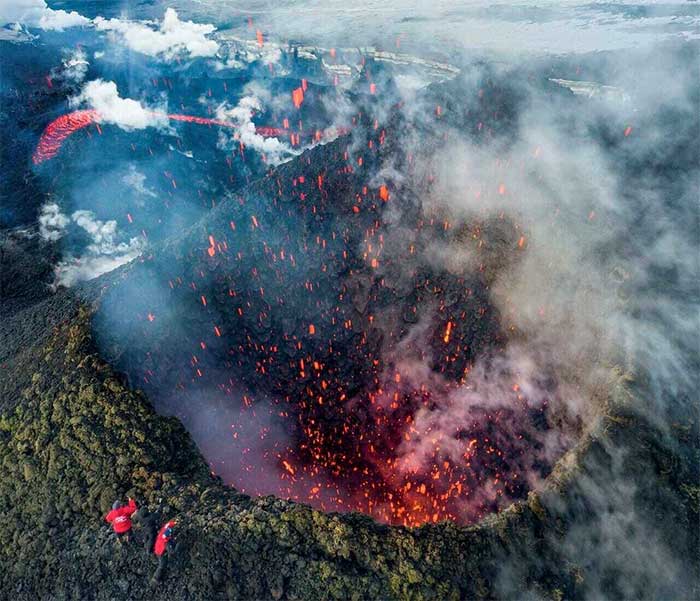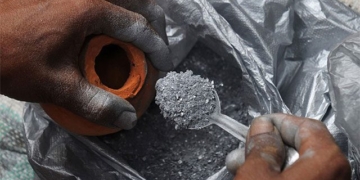The Klyuchevskoy volcano in Russia, the highest volcano in Europe and Asia, erupted vigorously in early November, leaving a trail of smoke and ash captured by NASA satellites.
NASA provided several images of the eruption from Russia’s highest volcano earlier this November, offering a fresh perspective on the intense eruption and the ash cloud stretching up to 1,600 km.
Klyuchevskoy, sometimes referred to as Klyuchevskaya Sopka, is an active stratovolcano located on the Kamchatka Peninsula in Russia, which hosts over 300 other volcanoes.
According to the Kamchatka Volcanic Eruption Response Team (KVERT), the summit of Klyuchevskoy rises to 4,750 meters above sea level, making it the highest volcano in both Asia and Europe.

The amount of smoke and ash from Klyuchevskoy volcano has spread over an area extending more than 2 km, affecting transportation and the lives of local residents. (Photo: NASA)
The Klyuchevskoy volcano has been continuously erupting since mid-June of this year. However, on November 1st, a significant volcanic explosion released a large amount of smoke and ash, reaching a maximum height of 12 km above the Earth’s surface, according to NASA’s Earth Observatory.
The smoke and ash prompted KVERT to temporarily raise the aviation alert level to red (the highest possible level), requiring aircraft operating in the area to land. Some schools also had to evacuate due to increased air pollution.

The smoke cloud from the eruption spread all the way to the Pacific Ocean. (Photo: NASA)
The Landsat 8 satellite, jointly operated by NASA and the United States Geological Survey, captured a striking image of the eruption. NASA’s Aqua satellite also took a broader true-color image of the smoke, showing that the plume had “reached” and extended approximately 1,600 km at that time. According to the Smithsonian Institution’s Global Volcanism Program, this smoke plume reached as far as 2,255 km from the peak.
According to KVERT, the eruption lasted only a few days, and it currently appears that the Klyuchevskoy volcano has completely ceased erupting.
The Kamchatka Peninsula is part of the Pacific Ring of Fire, a tectonic belt that spans 40,200 km around the Pacific Ocean and contains about three-quarters of the world’s active volcanoes.

Klyuchevskoy volcano during an eruption in 2021. (Photo: AFP)
The volcanic belt has also been active in other areas recently: On October 30th, an underwater volcanic eruption off the coast of Iwo Jima, Japan, created an entirely new island of solid magma, which can also be seen from space.
The latest eruption of Klyuchevskoy is unlikely to have any significant impact on the ozone layer, as it contained much less water vapor and did not reach high altitudes in the atmosphere.


















































